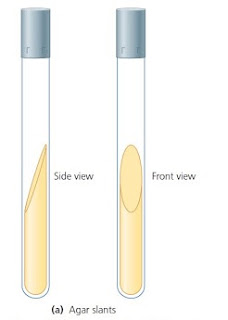Main Bacterial
Pathogens
— Vibrio cholerae
— Escherichia coli
— Salmonella typhi
— Shigella flexneri
— Campylobacter pylori
— Legionella pneumophila
— Leptospira
Diarrheal Diseases
Enteric fever/Gasteroenteritis/typhoid fever- Salmonella
typhi
·
Characterized by
fever and inflammation of intestine, ulcer formation, and other abdominal
symptoms
·
Nonspecific symptoms
- chills, sweats, headache, anorexia, weakness, sore throat, cough
·
The incubation
period - 5 to 21 days.
·
Patients recover
after 2-3 days; disease is limited to the GI tract in most cases
·
Organisms are
excreted in urine and faeces in large numbers during the active phase of the
disease
·
Max survival time 7
days; in natural waters above 150C
·
Lack of adequate
sanitation, major cause of the disease
·
Controlled by
maintaining proper sanitation
Shigellosis
(Bacillary dysentery)
·
Intestinal disease;
most common among young children
·
Shigella species; S.
dysenteriae, S. flexneri, S. boydii, and S. sonnei
·
S. sonnei (developed countries) S. flexneri (developing
countries)
·
S. dysenteriae (most severe infections), S. boydii - not
commonly isolated.
·
The organisms
survive stomach acidity, pass through the small intestine, and adhere to the
mucosal epithelium of the terminal ileum and colon
·
Destruction of the
superficial mucosal layer - mucosal ulceration
·
Classic bacillary
dysentery - characterized by diarrhea
with blood, mucus, and painful abdominal cramping. Abundant neutrophils,
erythrocytes, and mucus are found in the stool
· An exotoxin (Shiga
toxin) with enterotoxic and cytotoxic properties - isolated from S.
dysenteriae; implicated in the development of intestinal lesions
·
Shigella species - remain viable in food and water for as long as
6 months
·
readily killed by
chlorination of water, heat, and chemical agents
·
Infection -
generally self-limited, spread through drinking water contaminated with human
faeces
·
Shigella species carried primarily by humans and are not
disseminated in nature
· Most infections are
passed by the faecal- oral route - Organisms excreted in faeces and
urine; rarely survive more than 10 days outside
Cholera
·
Vibrio cholerae -
ingested in contaminated food or water -
multiply to large numbers on the mucosal surface and produce Cholera enterotoxin
·
The toxin causes hyper
secretion of fluids and electrolytes into the intestinal lumen
·
After several hours
to 3-days incubation, patients experience a sudden onset of severe watery
diarrhea with vomiting and abdominal pain
·
The stool specimens
are colorless and odorless, with mucuos flecks (rice-water stool)
·
Untreated, death
from severe dehydration and loss of minerals
·
Large numbers of
pathogens are excreted during the course of the disease - remain viable in
natural waters till 7 days
·
Chlorination of water
and standard disinfectants are able to destroy the organism easily
Campylobacter
jejuni
·
Also causes diarrhea;
transmitted through faeco-oral route
· Campylobacter jejuni
infection is one of the most commonly identified bacterial causes of acute
gastroenteritis worldwide.
·
In developing
countries, it is an important cause of childhood morbidity caused by diarrheal
illness
·
among the most
common causes of diarrhea in travelers from developed nations
· Local complications
of Campylobacter infections include cholecystitis (gall bladder infection), pancreatitis, peritonitis,
and gastrointestinal hemorrhage
· Extra intestinal
manifestations of Campylobacter infection are quite rare and may include
meningitis, endocarditis, arthritis, osteomyelitis, and neonatal sepsis.
· Serious systemic
illness caused by Campylobacter infection rarely occurs but can lead to sepsis
and death.
Other bacterial diseases - Non-Diarrheal
Legionnaires’ Disease (legionellosis)
·
Legionella pneumophila
·
Severe pneumonia;
considerable morbidity, leading to death unless therapy is initiated
promptly
·
commonly present in
small numbers in natural bodies of water, such as lakes and streams
·
Multiply profusely
in artificial aquatic habitats like air
conditioning, cooling towers and in water systems (e.g., showers, hot tubs)
·
Survive in moist
environments for a long time, at relatively high temperatures, and in the
presence of disinfectants such as chlorine
·
can parasitize
amoebae in the water and replicate in this protected environment
·
Respiratory tract
disease in susceptible people who
inhale infectious aerosols
·
Incubation period of
2 to 10 days; fever, and chills, a dry
non-productive cough, headache
·
Can develop into
multi-organ disease involving the gastrointestinal tract, central nervous
system, liver, and kidneys
·
Maintain free
residual chlorine in cold water supplies
·
Control the
temperature of water (cold water below 200C and hot water above 500C)
Leptospirosis
· Leptospira species; inhabit the kidneys of pet dogs and domestic livestock,
excreted into natural waters in urine
·
enter through the
abraded skin, oral or nasal mucosa, or conjunctiva following contact with
urine-contaminated water by drinking, immersion of hands, or swimming and infected wild life and domestic animals especially
rodents
·
Leptospira
icterhaemorrhagiae - associated with
human disease; Weil’s disease
·
Fever, chills,
headache, GI disturbance, and conjunctival redness
·
In 2 – 7 days, the
patient becomes afebrile
·
After 1 – 3 day, a
recurrence of fever, which persists for only couple of days
·
Jaundice, rash,
hepatosplenomegaly, meningitis, and/or renal damage







